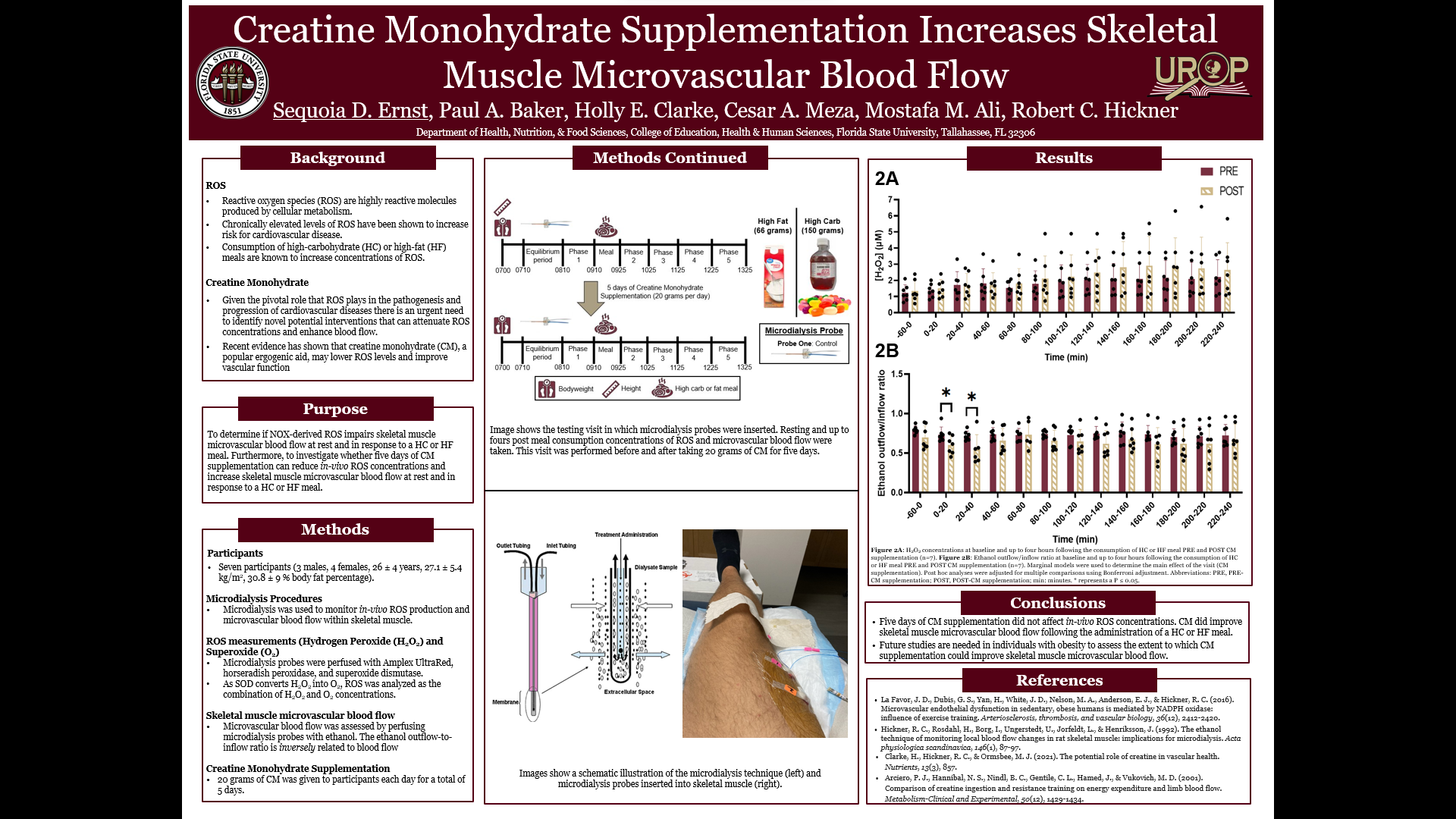Research Symposium
24th annual Undergraduate Research Symposium, April 3, 2024
Sequoia Ernst Poster Session 2: 10:45 am - 11:45 am/342

BIO
Hi, I'm Sequoia Ernst. I'm an undergraduate research assistant under Dr. Baker and Dr. Hickner in the FSU Laboratory of Integrative Vascular and Metabolic Physiology. We're studying how exercise and supplements affect oxidative stress and cardiovascular damage. I'm majoring in exercise physiology and planning to continue with research after I finish my undergraduate education.
Creatine Monohydrate Supplementation Increases Skeletal Muscle Microvascular Blood flow
Authors: Sequoia Ernst, Dr. Paul BakerStudent Major: Exercise Physiology
Mentor: Dr. Paul Baker
Mentor's Department: Health, Nutrition, and Food Sciences Mentor's College: Education, Health and Human Sciences Co-Presenters: Ella Vizzini
Abstract
Chronically elevated levels of reactive oxygen species (ROS), free radicals that can hinder skeletal muscle blood flow (SMBF), are a known symptom of cardiovascular disease (CVD). Therefore, interventions aimed at decreasing ROS concentrations and increasing SMBF are crucial to lower CVD risk. Recent evidence has shown that creatine monohydrate (CM), a common sports performance supplement, may decrease the risk of CVD. The current study sought to determine if CM supplementation could lower ROS concentrations and improve SMBF in response to a meal, a known stimulator of ROS concentrations. Seven participants (n = 7; 3 males, 4 females, 26 ± 4 years, 27.1 ± 5.4 kg/m2, 30.8 ± 9 % body fat percentage) had microdialysis probes placed in their leg to measure in-vivo ROS (Hydrogen Peroxide (H2O2)) concentrations and SMBF (ethanol outflow/inflow ratio, inversely related to blood flow) at rest and for four hours post-meal consumption. Procedures were performed both before (PRE) and after (POST) five days of CM supplementation (20 g/day). Following CM supplementation, ethanol outflow/inflow ratio was lower (higher SMBF) POST CM supplementation compared to PRE CM supplementation at 0-20 min (p= 0.036) and 20-40 min (p = 0.049) following meal consumption. At POST CM supplementation H2O2 concentrations were significantly elevated at several time points following the meal (p ≤ 0.05). Therefore, this data shows that five days of CM supplementation could be an effective strategy for enhancing blood flow following meal consumption which may help to lower CVD risk.
Keywords: Health, Creatine, Supplements, CVD, Cardiovascular


